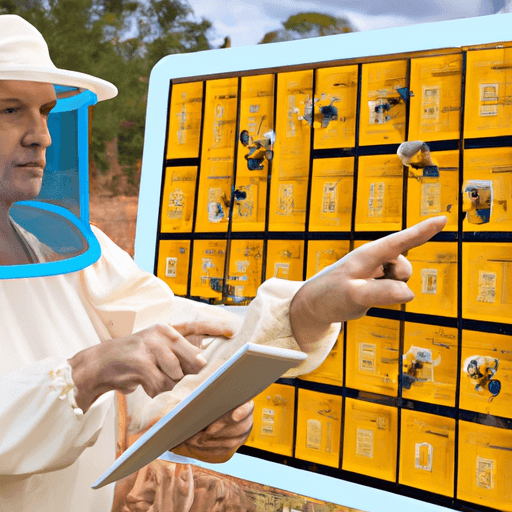Technology's Influence on the Beekeeping Industry
Over the years, technology has significantly transformed various industries. The beekeeping industry is no exception and has experienced a seismic shift owing to the integration of technology. Technology in beekeeping has brought both advantages and challenges, effectively altering the way bee-related activities such as hive monitoring, bee tracking, and honey harvesting are done.
Advancements and Efficiencies
From hive monitoring systems to bee tracking technologies, modern innovations have simplified the intricate process of beekeeping. For instance, Arnia's remote hive monitoring system provides beekeepers with real-time data regarding temperature, humidity, and bee flight intensity. This ensures efficient hive management, alerting beekeepers of any abnormal activities that require immediate intervention.
Furthermore, advancements in bee tracking technology help researchers and beekeepers understand migratory patterns and behaviour of bees. Devices like the RFID (Radio Frequency Identification) tags are now being used for this purpose. Accurate data gleaned from such technology facilitates a proactive approach towards addressing potential threats to bee health and consequently, to the beekeeping industry.
Honey harvesting technology, on the other hand, has seen leaps in productivity and safety measures. Modern honey extractors and automated uncapping machines have significantly reduced manual labour and minimized chances of harm to both bees and beekeepers. Companies like Flow Hive have pioneered in this field, providing innovative harvesting solutions.
Impact on Bees' Health
Many argue that technological advancements have beneficial impacts on bees' health and overall well-being. Remote monitoring systems, for example, allow for timely interventions that can prevent disease outbreaks. They facilitate better management of pests and predators, contributing towards enhancing the health of the hive.
However, it is essential to strike a fine balance between technological use and preservation of natural patterns. The excessive use of tracking devices and other invasive monitoring systems can stress the bees, potentially leading to changes in their natural behaviour and lifecycle.
Challenges
The technologies, despite their advantages, present a fair share of challenges. They require significant investment, technical knowledge and upkeep, which might not be viable for all beekeepers. Understanding the data produced by such technologies also requires a learning curve and ongoing adaptation. Another major challenge lies in ensuring these technologies are bee-friendly and do not end up doing more harm than good.
In conclusion, while the integration of technology spells a promising future for the beekeeping industry, it is crucial to ensure that these innovations align with the welfare of the bees themselves. Only then can technology truly champion the cause of sustainable and productive beekeeping.
It's a dynamic field, and continued research, development, and application of responsible technological solutions is needed to ensure beekeeping remains a viable and sustainable industry.
















Comments
Leave a Comment